In 1971, a set of Roman Baths which laid hidden for almost 2,000 years were discovered in Exeter.
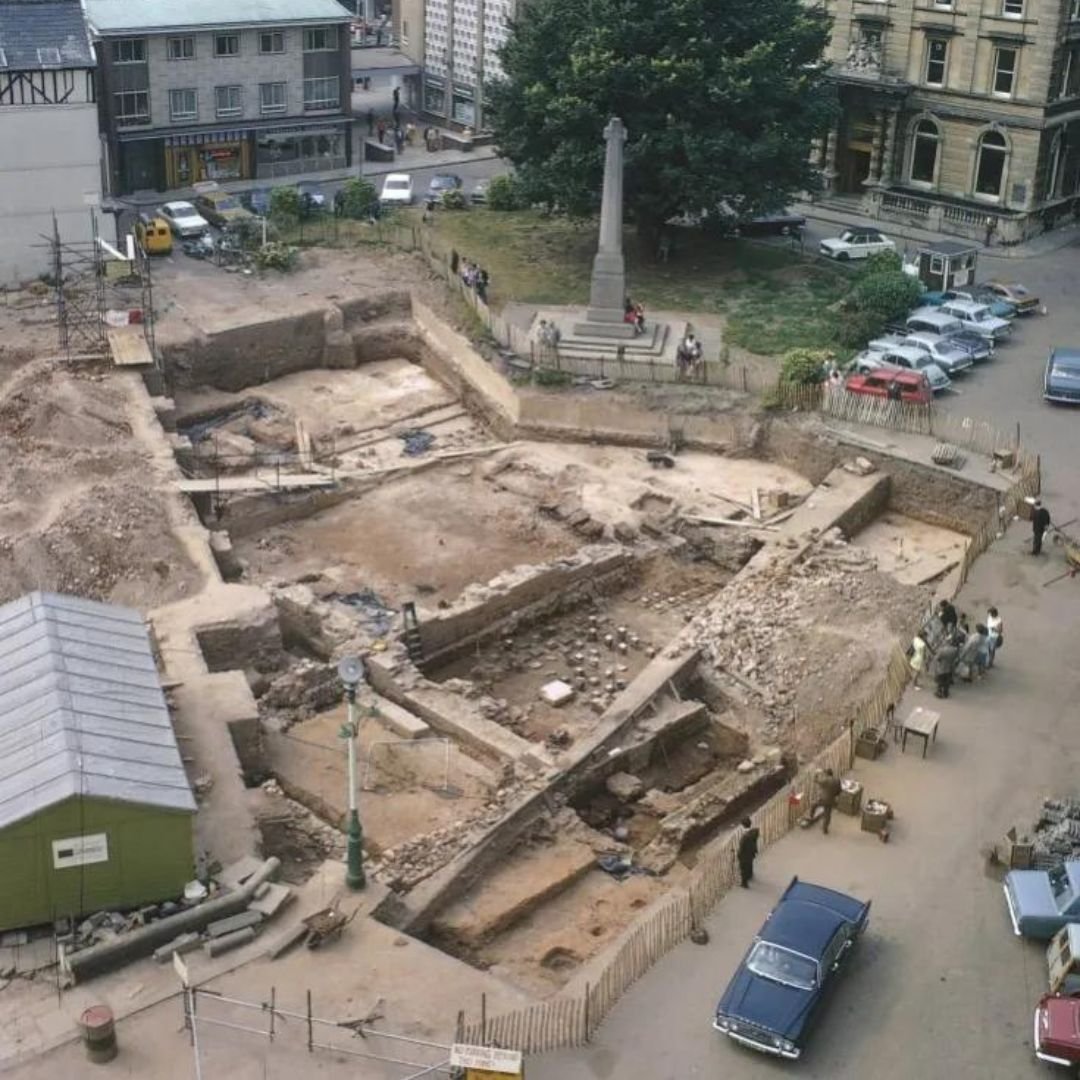
The site was remarkably discovered in 1971, but due to a lack of funds, it was controversially reburied under the cathedral green to protect it.
In 1971, plans were made to build an additional car parking space in an underground car park, opposite Exeter Cathedral.
To allow this to happen, it was decided that St Mary Major church, which stood opposite the cathedral, should be demolished.
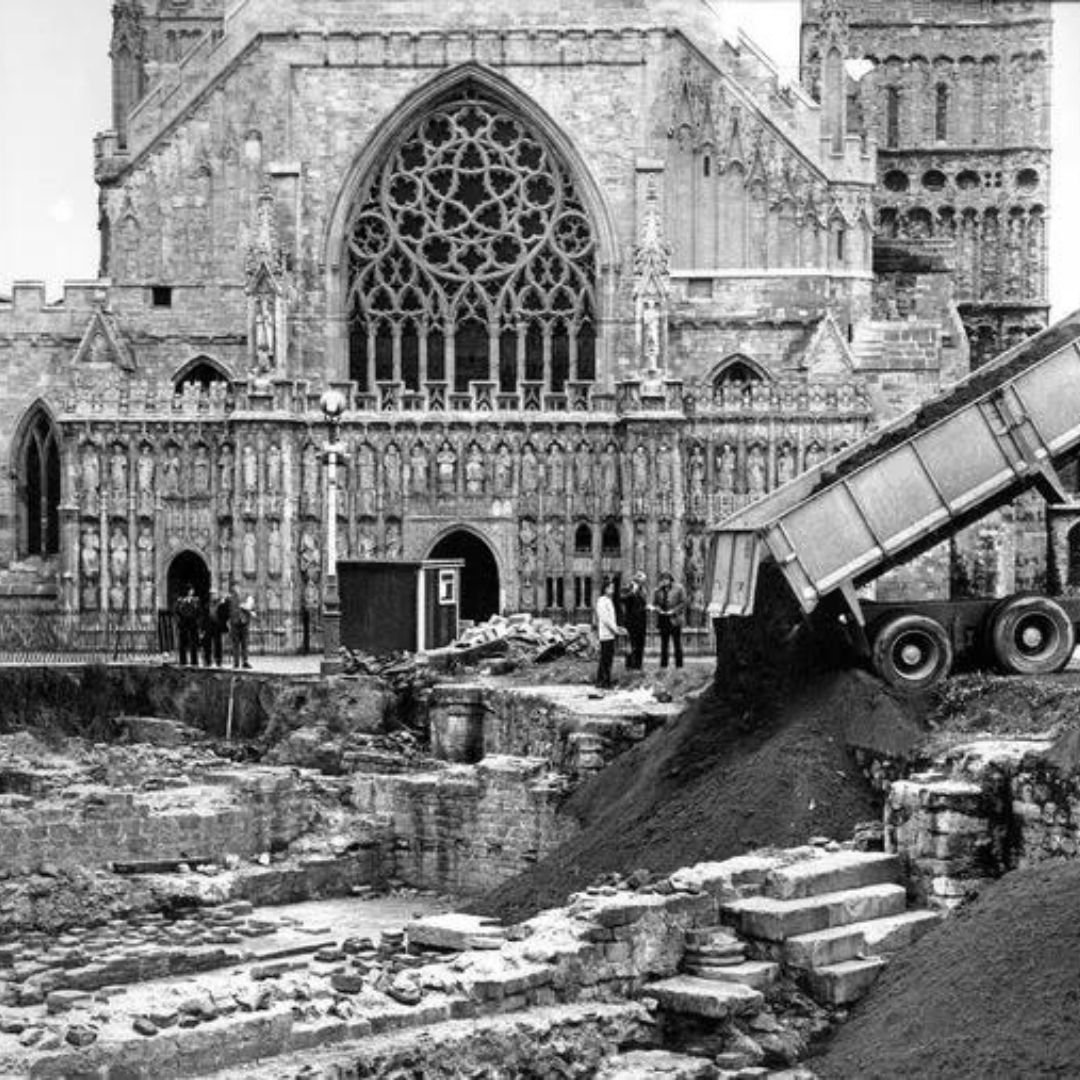
The demolition of the Victorian church went ahead, with the understanding that if anything of historical interest were found on the site, it would be recorded.
During the process, an incredible Roman military bathhouse was unearthed, which is of great historical significance.
The archaeologists excavated further and were astonished to reveal Roman remains – it was soon discovered that they were the remains of a Roman Bath House.
The Roman Bath House is said to have been built around AD60 and shows excellent quality.
It includes; hot air underfloor heating, a hypocaust and tiled flooring set throughout a range of rooms with varying purposes – “cutting edge” for its time!
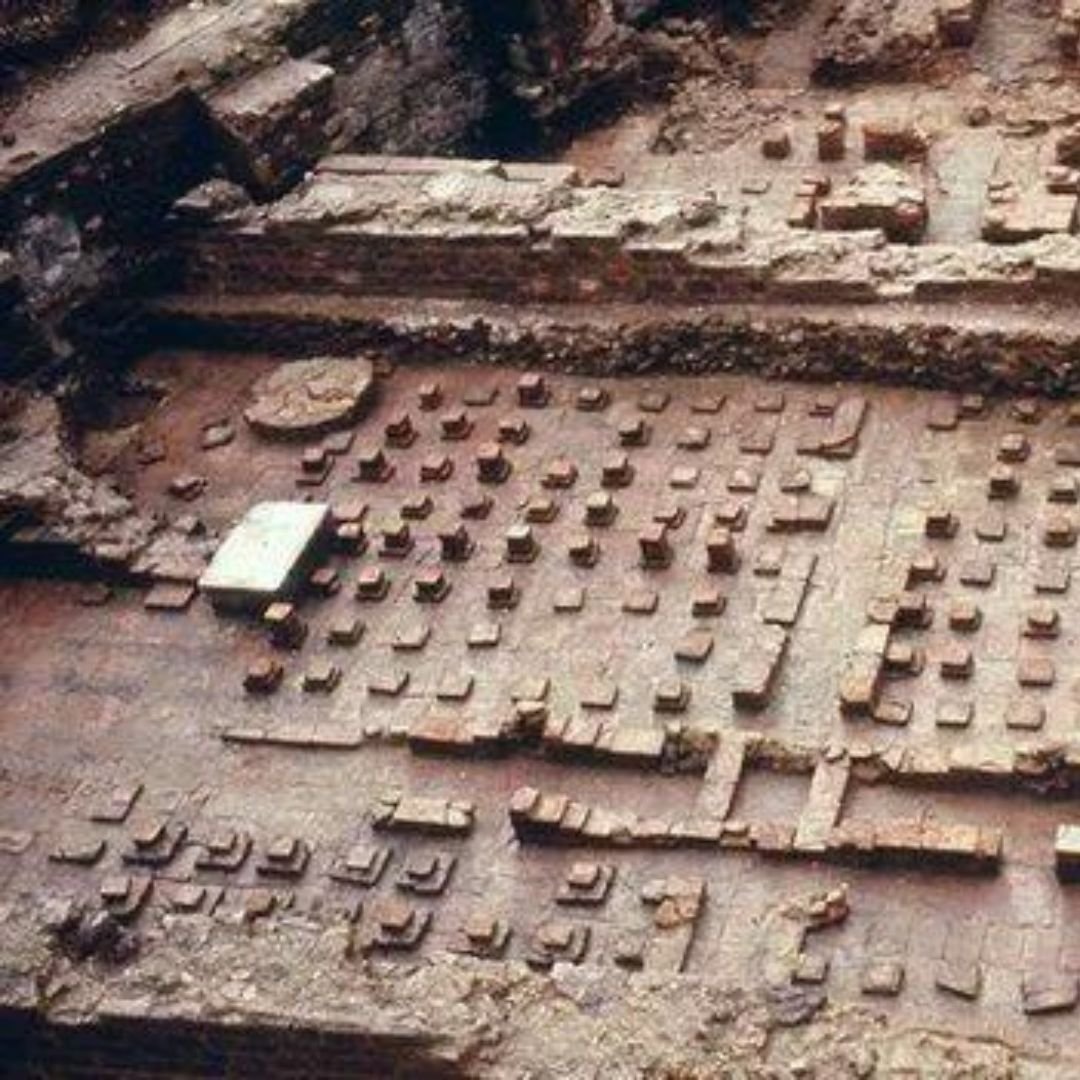
Further excavation revealed a trepidarium (cold room), an expensive furnace house, an exercise yard, and multiple service rooms.
It was a well-developed bath complex, absolutely unique in Northern Europe, and for its time, the bath complex would have been quite superior.
It was one of the earliest stone-masonry buildings to be constructed in Roman Britain, which has huge implications for the status of Roman Exeter.
Constructing such a bath house would have been a difficult thing to undertake at the time.
Five quarries had to be established to supply stone – Purbeck marble and limestone from Dorset, lead and iron ore had to be located and smelt, and clay excavated and fired into bricks and tiles.

Such an undertaking was beyond the Roman army, even though they were well used to engineering work. This was the work of imported architects and craftsmen.
For its time, this distant outpost of the Roman Empire had what was perhaps the most advanced bath house in the Roman world.
This was building at the forefront of technology – Exeter was one of the first heating systems to employ hollow rectangular box tiles for the walls to channel hot air from beneath the floor.
In addition, iron bars were laid on the tops of the supports that carried the floor above the hypocaust to strengthen it and prevent disintegration due to the heat.
Dr John P. Salvatore worked on the site’s excavation between 1972 and 1974.

“The Roman military bathhouse at Exeter was the first-ever stone-built monumental building in the southwest of England,” he said.
The Romans built this large public bathhouse complexe so that they could meet up with their friends to wash, relax and have fun.
It was a bit like a leisure centre, they had swimming pools, changing rooms and toilets, they also had hot and cold rooms.
This Legionary Bathhouse in Exeter was called Isca Thermae – Isca means ‘water’ or ‘river’.
Bathhouses would have been spectacular buildings, the one in Exeter was the same size as the floor area of the cathedral (pictured below).
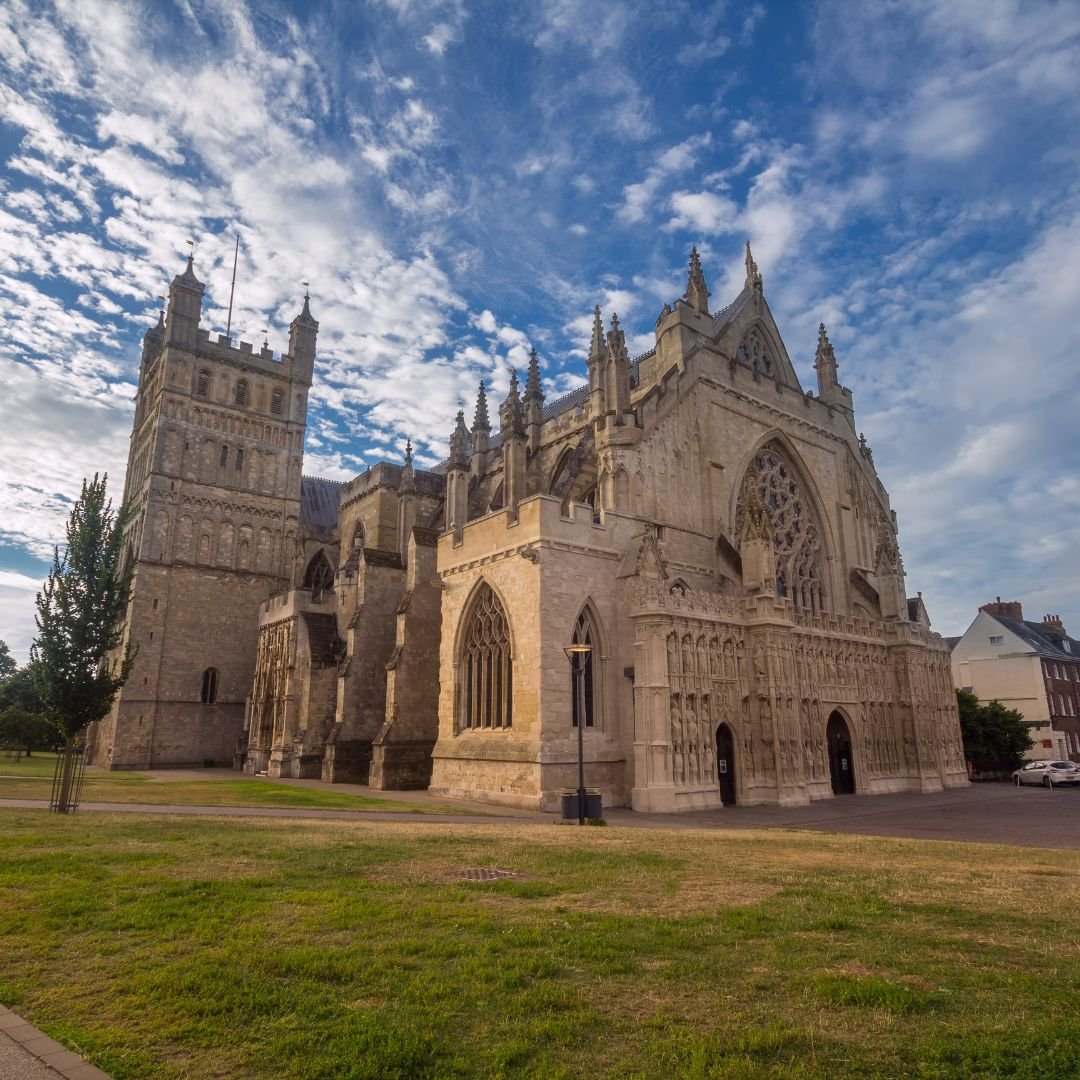
The Archaeological Unit, the City Council and the Cathedral authorities were not quite sure what to do about the find.
Some wanted it to be fully exposed and a public interpretation centre be built over the remains.
In the end, it was decided to cover the site with sand and grass it over, for possible resurrection at a later date.
Fast forward to 2014, and the Cathedral authorities announced that they were working on plans to uncover the bath house, and build an interpretation centre, with other facilities, over and to the side of the remains.
The scheme would cost £12.8 million, largely funded by the Heritage Lottery Fund, but it never materialised.
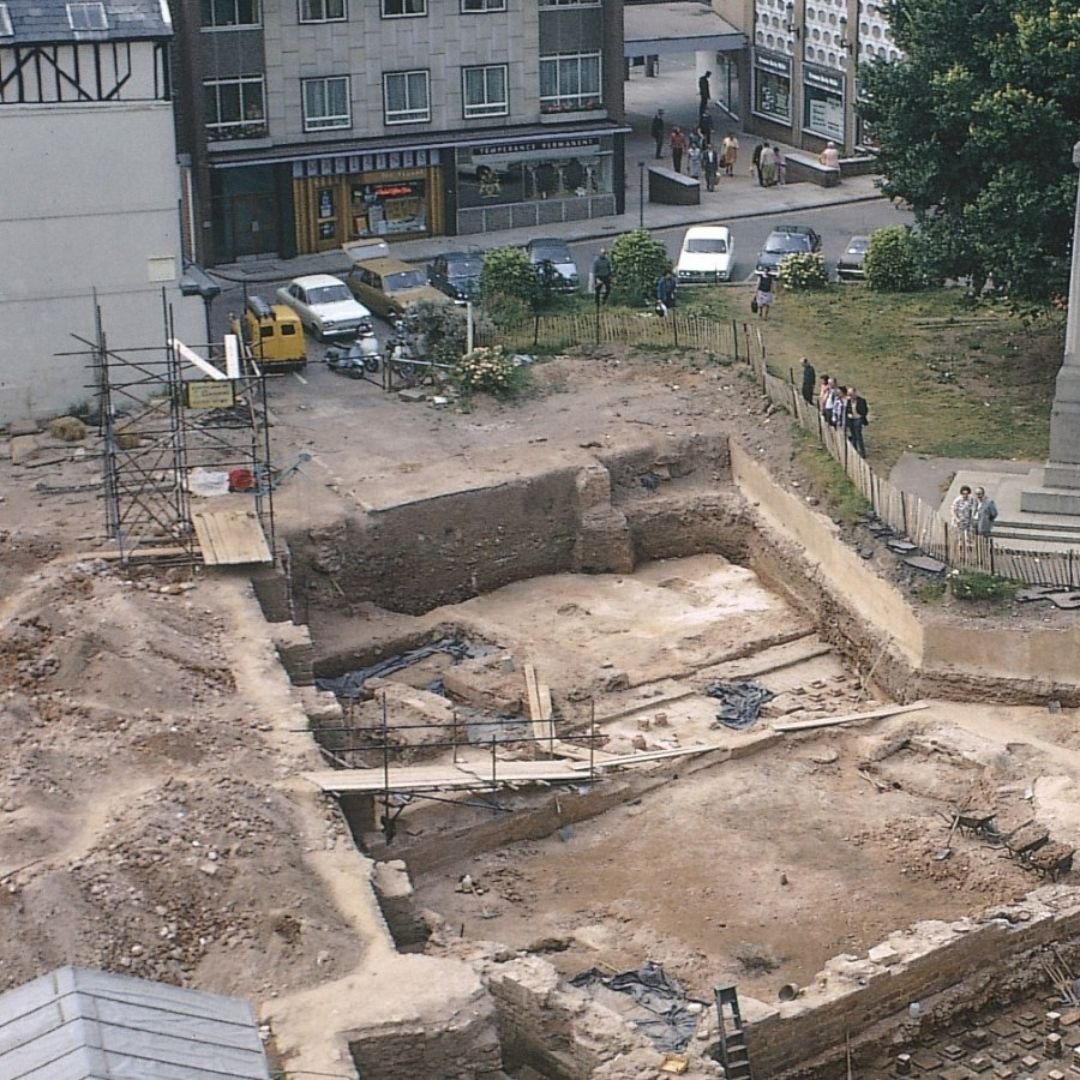
So as of today, the Roman Baths are still buried beneath our feet, opposite the magnificent cathedral.
Exeter Cathedral is one of Europe’s greatest cathedrals – and it features the longest uninterrupted medieval vaulted ceiling in the world, at about 96m!
The present building was complete by about 1400 and has several notable features, including an early set of misericord and an astronomical clock.
Exeter is a famous Roman city – amazingly, more than 70% of the wall that once protected Exeter still remains and reveals a lot about the geology of the area.
Work began on the wall about 1800 years ago by the Romans and the following centuries saw many alterations and repairs, generally using whatever material could be found nearby.
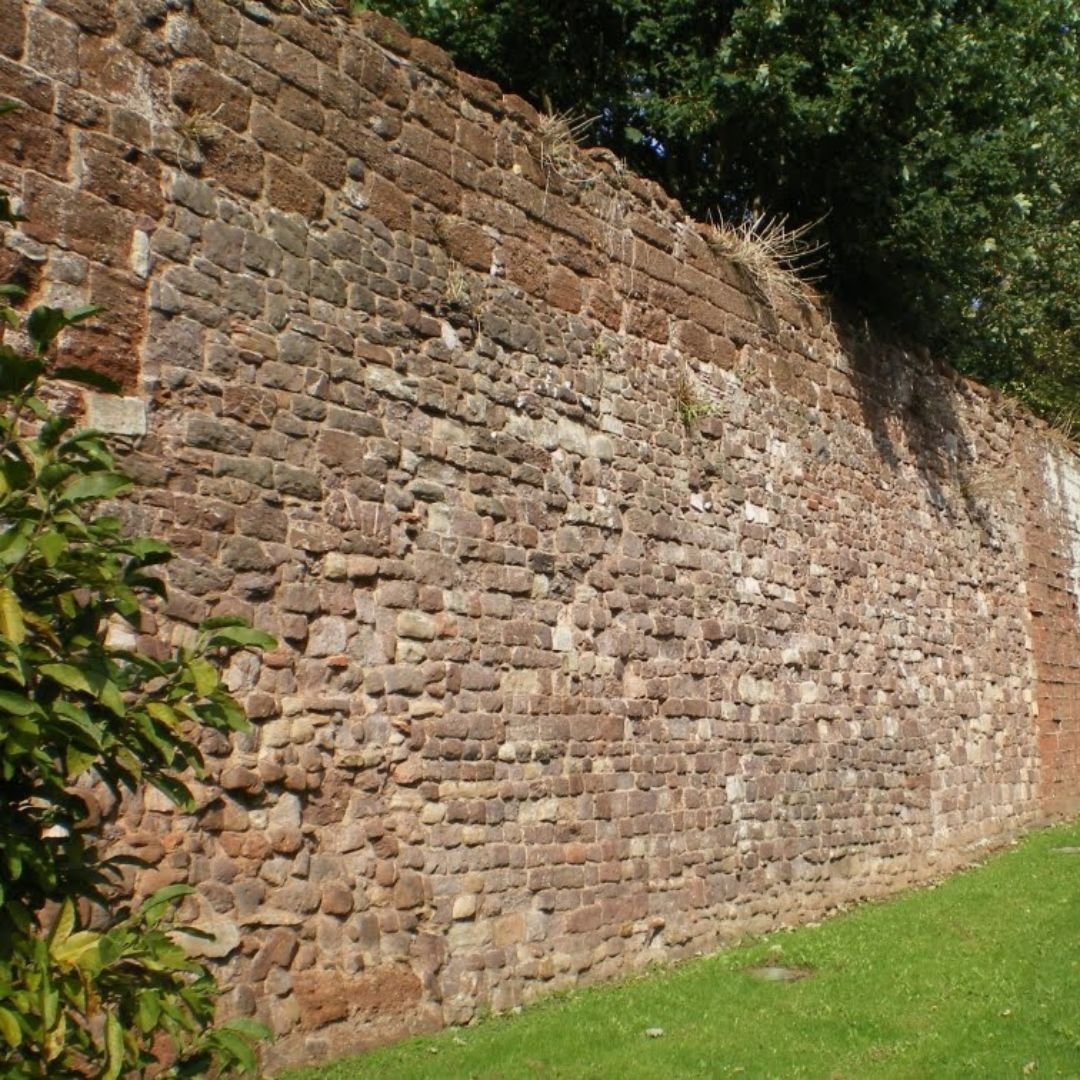
A walk along the walls will reveal a range of different rock types, within the area of Exeter there are numerous listed buildings and Scheduled Ancient Monuments to explore.
These include the Cathedral (Grade 1 listed building) and the Cathedral Green and City Wall, both of which are Scheduled Ancient Monuments.
Set against a backdrop of Devon’s rolling hills and rocky coastline, Exeter is the county’s historic showpiece.
It’s most definitely worth a visit if you’re a history enthusiast!
If you enjoyed this blog post, please follow Exploring GB on Facebook for daily travel content and inspiration.
Don’t forget to check out our latest blog posts below!
Thank you for supporting Exploring GB.